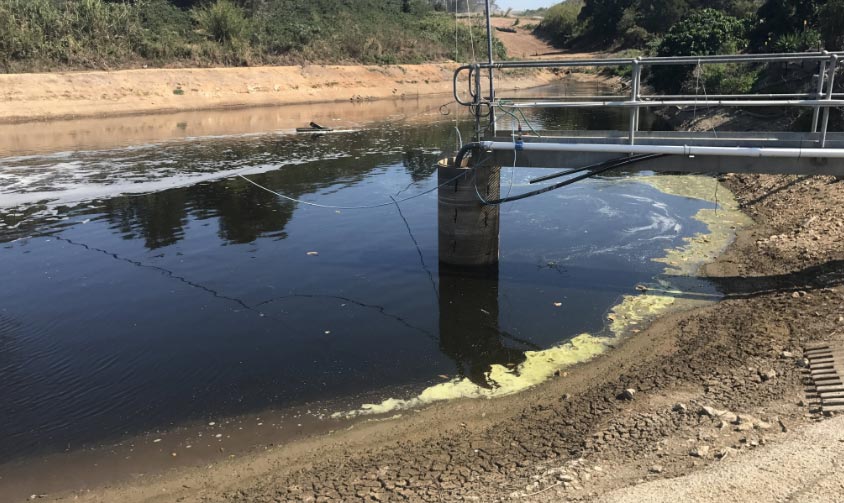How Fluid Garbage Disposal Functions: A Comprehensive Summary of Methods and Technologies Used

Introduction of Fluid Waste Kind
The intricacy of fluid waste kinds demands a comprehensive understanding of their qualities and ramifications for disposal. Liquid waste can generally be categorized into a number of kinds, consisting of industrial, metropolitan, farming, and unsafe waste. Each category exhibits distinct residential or commercial properties, needing details management strategies to reduce environmental and wellness risks.
Industrial fluid waste stems from producing procedures and usually includes a variety of contaminants, such as hefty metals, solvents, and organic substances. Local fluid waste, mostly comprising wastewater from homes and industrial facilities, consists of natural issue, nutrients, and virus (industrial wastewater treatment). Agricultural fluid waste, consisting of drainage from ranches, might contain fertilizers, chemicals, and pet waste, posing risks to water high quality and environments
Hazardous fluid waste is characterized by its toxicity, sensitivity, or possible to trigger harm. Recognizing these varied fluid waste types is vital for establishing effective disposal methods and ensuring compliance with environmental regulations.
Physical Treatment Techniques

Testing is the preliminary action, where larger bits and particles are gotten rid of from the fluid waste making use of screens or grates. In sedimentation storage tanks, larger particles resolve at the base, developing a sludge layer, while the cleared up fluid can be more treated.
Purification is an additional crucial technique that includes passing the liquid through porous products, such as sand or membrane layers, to catch smaller sized particles. This step improves the quality of the fluid, making it appropriate for subsequent therapy procedures.

Chemical Therapy Methods
Chemical therapy strategies are crucial for efficiently managing fluid waste, particularly in dealing with dissolved and colloidal pollutants that physical methods may not properly eliminate. These methods make use of different chemical agents to counteract, precipitate, or change unsafe compounds into much less hazardous kinds.
One typical technique is coagulation and flocculation, where chemicals such as alum or ferric chloride are added to promote the aggregation of put on hold bits. This procedure enhances sedimentation, permitting for much easier removal of the resulting sludge. In addition, oxidation processes, utilizing representatives like chlorine or ozone, are used to break down complex organic compounds and microorganisms, rendering the waste more secure for discharge or further treatment.
Neutralization is one more essential strategy, which readjusts the pH of acidic or alkaline waste streams to neutral degrees, avoiding potential damage to downstream systems and the atmosphere. Furthermore, progressed oxidation processes (AOPs) use combinations of oxidants and ultraviolet light to weaken consistent toxins, attaining a higher level of therapy effectiveness.
Organic Therapy Processes
Biological therapy processes play an essential duty in the management of liquid waste by using microbes to disintegrate raw material and lower impurity degrees. These procedures can be extensively classified into cardiovascular and anaerobic treatments, each using specific microbial neighborhoods to accomplish reliable waste degradation.
Aerobic therapy includes the use of oxygen to help with the failure of organic materials by bacteria. This process is commonly executed in activated sludge systems, where oygenation containers give a favorable setting for microbial growth, resulting in the oxidation of organic contaminants. The resultant biomass can be divided from treated effluent via sedimentation.
In comparison, anaerobic therapy takes place in the lack of oxygen, relying upon different microorganisms to break down organic matter. This method is specifically useful browse around this web-site for high-strength waste, great site as it creates biogas, a renewable resource source, while decreasing sludge production. Technologies such as anaerobic digesters are frequently utilized in commercial and local applications.
Both cardio and anaerobic organic therapies not just reduce the ecological impact of fluid waste however likewise assist in source healing, making them important parts of sustainable waste administration approaches. Their efficiency, performance, and versatility sustain their prevalent execution throughout different industries.
Emerging Technologies in Disposal
Cutting-edge strategies to fluid garbage disposal are swiftly advancing, driven by developments in innovation and an increasing focus on sustainability. Among these emerging technologies, membrane bioreactors (MBRs) have gotten traction for their ability to incorporate organic treatment with membrane filtering, causing top quality effluent that can be recycled in various applications. MBRs make it possible for smaller sized impacts and extra efficient procedures contrasted to standard systems.
One more promising growth is using anaerobic digestion combined with nutrient healing technologies, which not just treats fluid waste but also produces biogas and recoups beneficial nutrients like nitrogen and phosphorus. This double benefit improves source efficiency and reduces environmental influence.
Furthermore, advanced oxidation procedures (AOPs) are being taken on for the degradation of complex natural toxins. These methods use powerful oxidants and catalysts to break down contaminants at the molecular level, using an extremely reliable solution for difficult waste streams.
Additionally, the combination of expert system and artificial intelligence in waste management systems is enhancing functional effectiveness and predictive maintenance, bring about reduced prices and enhanced environmental compliance. These innovations reflect a substantial shift in the direction of more effective and lasting fluid waste disposal techniques.
Verdict
In final thought, reliable fluid waste disposal demands a comprehensive understanding of numerous methods and technologies. By continuously advancing these techniques, it comes to be feasible to resolve the expanding challenges associated with fluid waste, ultimately contributing to environmental defense and source recovery.
Liquid waste visit the site disposal is a critical facet of ecological administration, calling for a thorough understanding of different methods and technologies tailored to different waste types. Fluid waste can broadly be categorized into several types, including commercial, municipal, agricultural, and unsafe waste. Agricultural fluid waste, consisting of runoff from ranches, might consist of fertilizers, chemicals, and pet waste, posing risks to water high quality and communities.
Various physical therapy approaches play an essential duty in taking care of fluid waste properly - industrial wastewater treatment.In conclusion, efficient fluid waste disposal requires an extensive understanding of various techniques and innovations